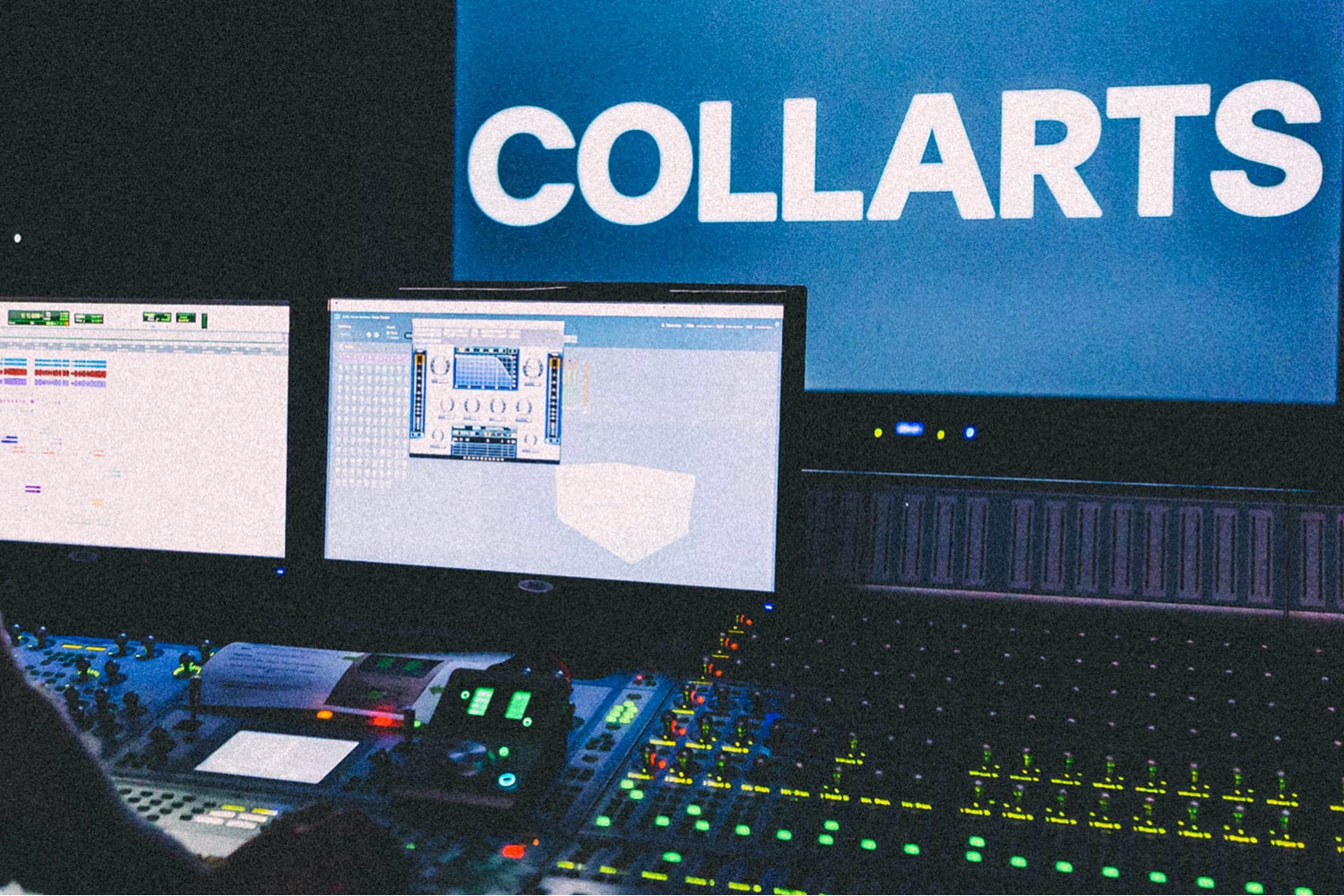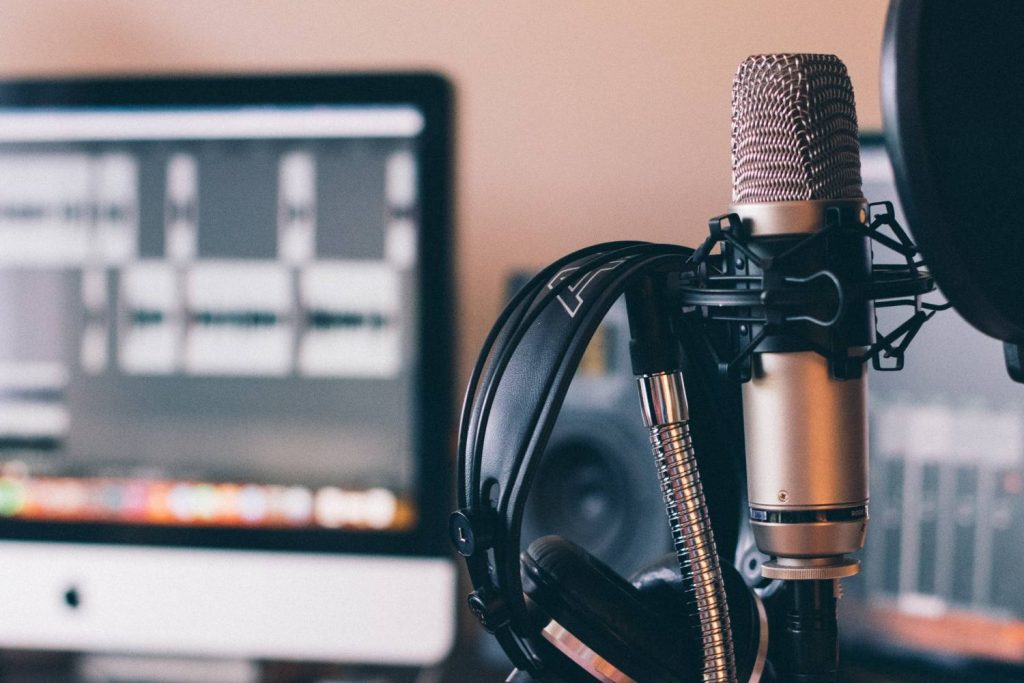Part five of our audio deep-dive with Collarts.
Like anything in life, there is an easy way and a hard way of doing things, and in this respect, learning audio from home is no different.
With so much to learn (and with legit industry professionals on hand to learn it from) it makes sense to optimise your workflow and leave yourself with as much time/energy to focus on the important stuff as humanly possible, rather than getting caught up searching for missing media or trying to get your webcam to work.
For this instalment of ‘Isolate and Innovate’, we thought it would be as good as time as any to pass on a few shiny pearls of wisdom, providing you with eight simple audio life-hacks to help get the absolute most out of your remote learning experience.
Make (and keep) a schedule
Just like in real life, the old adage that ‘a lot can be said for just showing up (ready and on time)’ still rings true, even in the super flexible world of remote audio education. It goes without saying that maintaining a routine is one of the easiest ways to keep ahead of the curve, giving you time double back and marinade on the nitty gritty.
For Jason Torrens, Head of Audio at Collarts, it’s all about load management and making sure you have ample time to wring every bit of value you can from the curriculum.
“There is just so much valuable information that you can draw from this course and the lecturers we have on staff are experienced audio professionals with an incredible wealth of knowledge to share—and all with the goal of making you a better Audio Engineer.
“As a student, coming into each day prepared means we have more time to focus on the important stuff!”
Stay organised
Again, this one is a given, but keeping those session folders and WAV files organised is an absolute must for all audio people, regardless of how long you have been in the game.
For students right through to seasoned audio professionals, there is simply no worse a feeling than accidentally misplacing that perfect take or sending a finished mix session to the digital graveyard.
“I’ve personally been on screen share with students and have stopped what we were doing, just to quickly set up a proper folder management system,” recalls Jason.
“Audio is one area where you never want to be using the search bar. Folder structure is important,” he explains. “You need to know exactly where your Media and Sessions are kept in order to get the most out of it.”
Back up (and then back up again)
While we are on the topic of organisation and storage, always remember to save and back up your work as often as it crosses your mind (and you should be reminding yourself constantly).
When it comes to backing up work, audio engineers might be the most cautious and paranoid people on Earth – and rightly so. After all, the sheer number of sources, coupled with the infinite tweaks and one-off performance/sonic variables means that it’s an extremely high stakes game when it come to storage and backing up.
For most engineers, it’s not uncommon to have your work backed up across multiple drives and cloud services, so at least you can go to sleep, safe in the knowledge that even in the event of a nuclear winter, your project will be in on time – and sounding exactly as intended.
Aim for the best internet connection possible
The remote audio course at Collarts is by its nature an incredibly inclusive and accessible learning environment, with the course being open to literally anyone with headphones and an internet connection.
While the technical requirements are few, one area that can go a long way to getting the most out of your remote learning experience is simply to ensure that your internet connection is as solid and reliable as possible.
If your house has a couple of different networks around, see if you can use the faster one for your uni work. If you know that your WiFi is intermittent at best (or you live in a blackhole for phone coverage), grab an ethernet cable and plug in.
Not only will this mean you’ll be less prone to dropouts or other stressful happenings, but a faster internet connection will directly translate to a higher quality audio stream, meaning a more accurate and detailed monitoring experience at the listening position, which, as any engineer will tell you, is worth its weight in gold.
For students with particularly poor connectivity, Collarts have even been known to organise grants to upgrade their IT situation and get their connection up to speed.
Get yourself a good pair of cans
Headphones are in many ways, the lens through which your audio education will be experienced, so it makes sense to invest in a decent, comfortable pair. Needless to say, you are going to be wearing them a lot!
Closed-back and over-ear is traditionally the way to go for most students, on account of the isolation it provides both at home and on campus, but in terms of a recommended model, Jason believes it’s more about working to an industry standard, rather than spending an arm and a leg.
“We normally just say anything from the big four professional brands is a good place to start. Beyerdynamic, AKG, Sennheiser, Audio-Technica—whatever you can afford from any of the above product lines, just means you have a solid working foundation. At least then you know that they are going to be comfortable, durable and with a flat enough frequency profile to really get the most out of the various critical learning applications.”
Visualise the signal flow
Regardless of whether you are in front of an expensive recording console, operating a live desk via MADI or adding plugins to your video conferencing via Audio Hijack, so many answers are sitting there waiting for you, simply by following the signal path.
As anyone in audio will tell you, understanding signal flow is in many ways the keys to the kingdom, allowing you to understand every link in the chain, its role and what it is bringing to the table, sonically. This also means being able to justify every stage of processing in the signal chain.
Not only will it save you precious CPU, but it will go a long way towards helping you get your head around key technical concepts and the journey audio takes from capture through playback.
“Signal flow is key, even in the online domain,” remarks Jason. “Even if we aren’t physically routing audio through a console, we are routing it digitally through a computer, showing students how this thinking is applied in the world right now. How to manage this signal flow and how it is being used today, especially with the increased sophistication in streaming—as a concept its absolutely vital.”
Make a note of it
This one might again be a no-brainer (after all, school and note taking are part and parcel at this point), but for an audio engineer where the difference between good and great can be as little as half a dB, proper note keeping practice takes on a heightened level of importance.
This also rings true in the remote learning domain, even with the amazing recall of modern DAW workflow, and with Collarts having their lectures up online for students to access at anytime.
“Even with these incredible resources at our disposal, sometimes there is simply no better substitute for jotting it down if you think it may be useful later on. This extends to things like markers in Pro Tools, or writing down notes on mic choice/placement in the comments section of your DAW of choice. That way, if you strike production gold during your time at uni, you ‘ll at least be able to trace back and find exactly how you got there.”
Broaden your scope
As aspiring audio engineers, it’s easy to fall into the trap of hyper-focusing on one main area of interest, whether that be music, post-production or sound design, at the expense of everything else out there, but to do so is to potentially lose sight of the bigger picture.
“Something that I always drive home to the students is the importance of versatility in this industry,” says Dylan Mitrovich, Audio Course Coordinator. “The more you can do, the better.”
That’s not to say that an understanding of post and front-of-house workflows won’t directly benefit your musical undertakings either, on the contrary it’s one of the best ways to tighten up your audio skillset and apply it to your own productions or artistic life.
“It’s so important for us to teach the three main pillars of audio – studio, live, and post-production – and expose our students to the different concepts found in each,” explains Torrens, himself an audio triple threat in these fields.
“Each of these disciplines has its own unique considerations and skillsets, but all of which are completely transferable between and across the other different areas of production.”
“I think learning these skills, each in the context of their specialist field means you are able to carry them with you to whatever project you are working on next, and that is incredibly powerful.”
Find out more about the audio pathways on offer from Collarts today.







